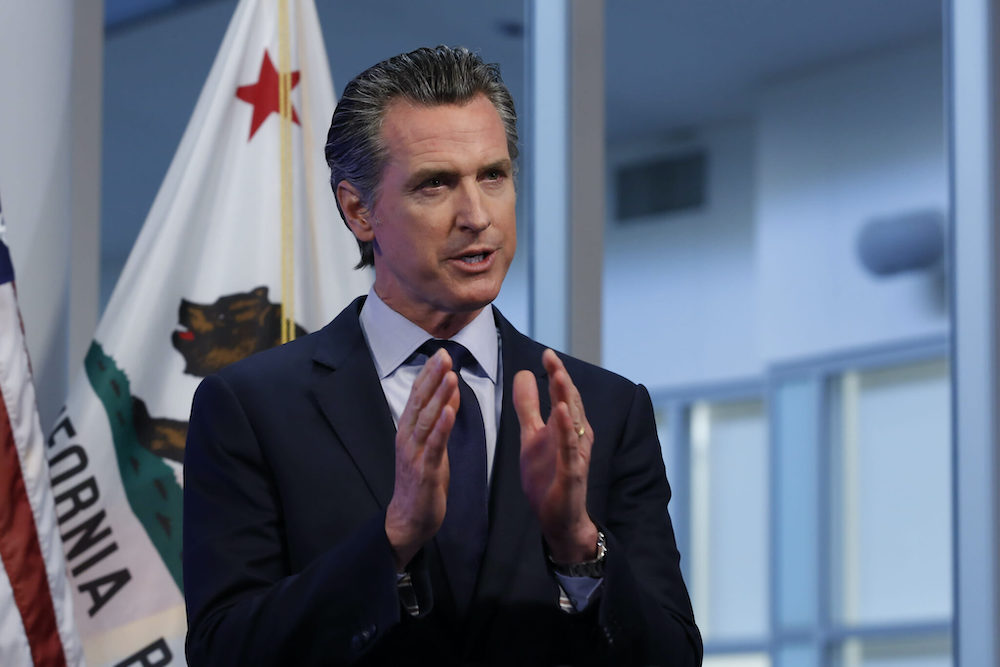
On Sept. 14, Californians will be able to decide if they want to replace Gov. Gavin Newsom with one of the 46 candidates on the ballot as possible replacements, according to the secretary of state's office. The main question, however, is whether or not to recall Newsom?
California Secretary of State Shirley Weber called on all Californians who are eligible to vote to exercise their right to do so, because, "this is a very important election and it goes far beyond who is going to be governor, it's about what California is going to do.
This was stated by the official during a briefing with the media organized by Ethnic Media ServicesHe also said that in these upcoming elections he expects a minimum participation of 80 percent of the electorate.
"That's my goal at the very least. I hope we realize that the system has been 'flawed,' but it's the system we have, and until after the election you can't do much about it, but I want to encourage everyone to get a ballot and vote," he said.
He stressed that this election is relatively simple. "Do you or don't you want to recall the governor? If you don't know about the others, don't worry. Do you want to recall the governor? That is an extremely important question."
In that sense, he advised the electorate not to be afraid or hesitant to vote, despite not having enough information about the 46 people who could replace Newsom, "do it".
"I want to encourage everyone. Every relative, every cousin, every friend, everybody to vote. Make sure you turn in that ballot and vote yes or no on recalling the governor...but it's a simple election. Let's not get too complicated. Let's just do it. We have two weeks to do it," he said.
A look at the P-progressive past
Raphael J. Sonenshein, executive director of the Pat Brown Institute of Public Affairs at Cal State LA, recalled that impeachment - famously known as "recall" - grew out of a Progressive Movement more than a hundred years ago, "but not Progressive with a lower case p as we use it today, but with a capital P. That was meant to challenge the way. That was meant to challenge the way."
But, he noted, in the late eighteenth century, there was a movement that said politicians cannot be held accountable by other politicians, but must also be judged directly by the people, because there was a sense that the American system of regular elections might not be enough for the people to have what was called "direct democracy."
However, in the early 1900s, he said, there was the initiative and a referendum that allowed the people to eliminate a law. But, in the city of Los Angeles, in 1903, a progressive movement led by a socialist physician and wealthy philanthropist named John Randall added a third piece called "recall" that struck fear into the hearts of all elected officials.
Thus, in 1903, the Los Angeles Statute included both the initiative and referendum, but also something new called recall, which allowed voters, by petition, to place on the ballot the question of an elected official's survival or removal. Recall became very popular throughout California, and by 1911, the initiative, referendum, and recall were all in the state constitution.
The fact that these dismissals are currently taking place is to face possible setbacks, the expert pointed out.
"The problem with these issues, like the rollback and a lot of progressive reforms, is that when you change the rules and create sudden and surprise and unusual elections, you run the risk of actually reducing participation, especially from marginalized communities, who may not have access to the tools and information to participate."
According to statistics, there have been 179 recall attempts against state officials in California, only 11 in 110 years got enough signatures to get on the ballot.
And, in Newsom's case, and because the judge provided a pandemic-related extension to those who were collecting the signatures, they were able to easily surpass the necessary consensus, with more than half a million valid signatures, so his recall was going to go on the ballot, he stressed.
Vote, vote, vote, vote
According to Sonenshein, this Newsom recall election didn't really begin until about 10 days ago. And it will be Sept. 14 when the vote ends.
"Sometime in the next two and a half weeks someone is going to put an ad or mailer out in the communities that are starting to be outreach to get people to vote incorrectly," he noted.
He added that it is "incredibly easy" to be a candidate for governor on the replacement ticket. And of the 46 candidates to replace Newsome, little is known about their political work. That would be a very different situation if a normal gubernatorial election were held.
"They didn't expect a bunch of candidates 110 years ago. Whoever wins the replacement election people will be unhappy."
On the other hand, he noted that the Bay Area has a large number of voters, while Los Angeles County has between one-fourth and one-fifth of all California voters.
However, there is also a large number of the electorate that has not registered to vote. Seniors are showing the most interest and are having a higher turnout, while those between the ages of 18 and 34 show a low profile, and as of a few days ago only 7.0 percent had sent in their ballots.
"White voters are overrepresented in the balance, and the group that has the least representation, according to the political data, is Latino voters. Right now, history shows that that will change in the next few weeks with a new wave of ballots coming in, but you can't take a wave for granted."
You may be interested in: What you need to know about the recall of Governor Newsom


